
20 minute read
Travel & Leisure
FROM the Caribbean to Mexico, Belize to the Virgin Islands, the list of tropical vacation destinations covers some of the most beautiful (and not too far) places in the world.
1. RIVIERA MAYA, MEXICO
Advertisement
e Riviera Maya is a stretch of Caribbean coastline on Mexico’s northeastern Yucatán Peninsula. It’s known for its all-inclusive resorts, yoga retreats, ancient Mayan ruins, and long, white-sand beaches. Fairmont Mayakoba o ers the ultimate tropical beach vacation and is the best way to experience what Riviera Maya has to o er. At Fairmont Mayakoba, guests can spot exotic birds, turtles, and even crocodiles from a resort boat in the mangrove lled jungle. Marine wildlife lovers can snorkel among sea fans, giant sponges and moray eels, or take a catamaran out on the water. Gol ng, spa services, mezcal tastings, or Mexican delicacy cooking classes are also o ered within this tropical paradise. If you can imagine it, they probably o er it at the resort! e private, gated 240 hectares property is surrounded by lush rainforest (that can be cycled along) lined with waterways, right on the Caribbean shoreline.

2. BRITISH VIRGIN ISLANDS
e British Virgin Islands is a British overseas territory and part of a volcanic archipelago in the Caribbean. It’s known as a haven for yachties, divers, and kiteboarders alike. Saba Rock, an island resort located within the British Virgin Islands, dates back to the 1960s. Saba Rock was put on the map by diving pioneer Herbert Kilbride when he founded his diving base for scuba diving and launched the legendary Pirates’ Pub, which is known for being one of the best oceanfront bars in the Caribbean. Since then, visitors have ocked to Saba Rock for a taste of the “old” Caribbean, from on-the-water adventures and breathtaking scenery to fresh-from-thesea cuisine and lively Happy Hours. e secluded resort o ers kayaking, paddle boarding, boating, diving, windsur ng, yoga, massages, and snorkeling.

3. GRENADA
Grenada is a Caribbean country dubbed as the “Spice Isle” due to numerous nutmeg plantations. Whether you participate in sailing, paddle boarding, shing, a beachside massage, or lounging away stresses on the white-sand beach with the sounds of the waves lapping against the shore, you will have found paradise at Mount Cinnamon Resort and Beach Club. An added bonus is that Mount Cinnamon Resort and Beach Club supports e South St. George’s Primary School through an initiative that allows travelers like you to make a lasting impact in the community. If you save just a few pounds of space in your suitcase to take supplies for the project, you’ll make a priceless impact in the lives of local children and families.
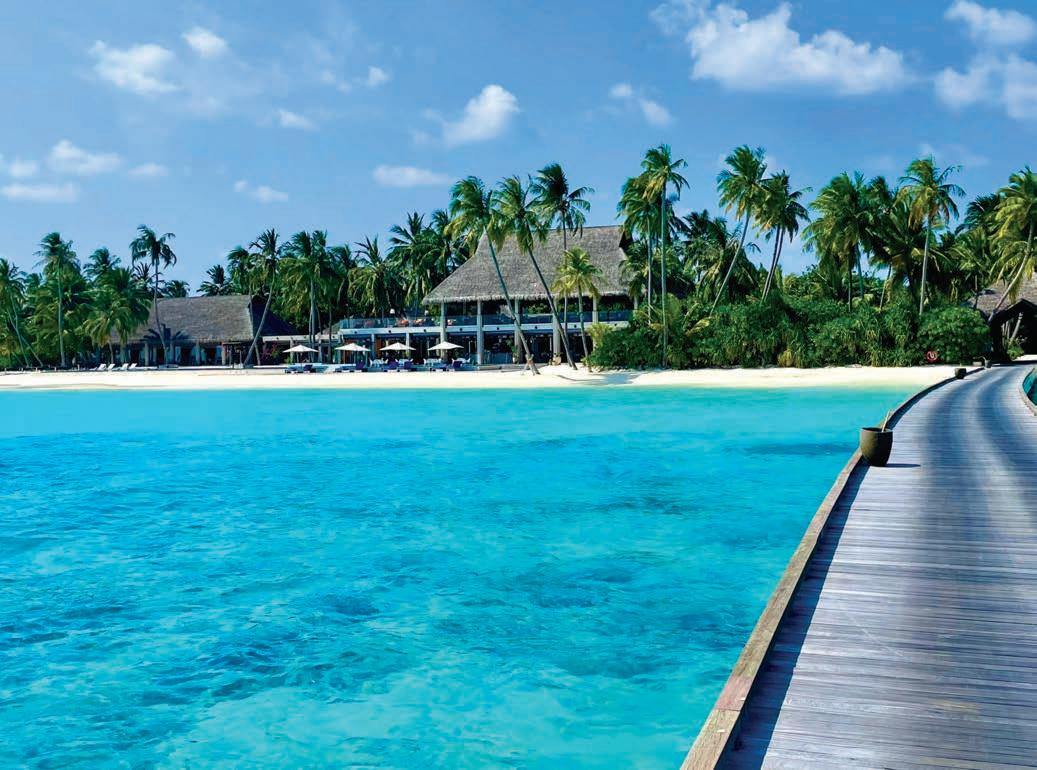
4. BELIZE
Belize is a nation on the eastern coast of Central America, with Caribbean Sea shorelines, a dense jungle, and Mayan ruins. Located three miles o the coast of San Pedro, Belize, Cayo Espanto is truly an unforgettable private island retreat. e Cayo region encompasses nature sanctuaries, the majestic Hidden Valley Falls, the lively town of San Ignacio, and many splendid Mayan ruins. Some travelers have claimed to have experienced nirvana from the summit of the main pyramid of Xunantunich, which o ers a sweeping vista of the Mopan Valley and Guatemala. e all-inclusive resort o ers excursions such as scuba diving, y shing, mainland tours, bone shing, private yacht tours, and bird watching tours. Pair that with world-class cuisine and a spa, and Cayo Espanto becomes your private oasis. All of Cayo Espanto’s premium villas are seafront and on the beach with private pools.
5. ANGUILLA
Anguilla, a British Overseas Territory in the Eastern Caribbean, is known for its prehistoric petroglyphs and a wildlife conservation site. Frangipani Beach Resort, a family-owned and operated establishment, is a luxury boutique resort in Anguilla. With just 19 rooms and suites and a four-bedroom villa, the resort allows guests an unrivalled, intimate experience. Guests have the opportunity to attend the weekly managers’ cocktail party, set sail on a sunset cruise, or dance the night away with sta at a local beach bar. Frangipani Beach Resort boasts a wide variety of activities. Whether you’re looking for poolside relaxation, water sports, a private boat charter, or a tennis match, they’ve got you covered. In case you still need an excuse to book a trip to Anguilla, Frangipani Beach Resort is committed to giving back to the island community with opportunities for social and cultural development in Anguilla.
Five tropical paces for the ideal holiday

SO you arrive at your top star hotel and there on the pillow of your luxurious bed are chocolates. Ever wondered why? Why you’re greeted with a sweet treat on your pillow when you enter a nice hotel room? It turns out we have a romantic actor caught in a scandal to thank. at actor is Cary Grant, the British-American leading man in movies from the 1930s to the 1960s, including the 1930s version of Alice in Wonderland and Arsenic and Old Lace.
According to the most widely spread legend, Grant booked the penthouse suite at the luxurious Mayfair Hotel in downtown St Louis during one of his frequent stays in the early 1950s. Grant, who was married to his third wife at the time, was trying to court a secret lover. As a romantic gesture, he decided to leave a trail of chocolates that began in the living room area all the way up to her pillow along with a letter.
A manager at the hotel had gotten wind of Grant’s gesture and decided to start leaving a chocolate on the pillow as a standard amenity in the hotel. Soon, many hotels did the same, turning the practice into a tradition. Now you’ll nd everything from expensive or locally sourced chocolates to the more generic stu , a cookie bite, or mints. e Mayfair was purchased by Marriott and became the Magnolia St Louis — a Tribute Portfolio Hotel in August 2014. e hotel had ended the tradition before it was sold. When Marriott purchased the property, management brought back the tradition using chocolates from Bissinger’s, one of the nest chocolatiers in the nation. e industry changing extra isn’t the only nod to the hotel’s past: In honou r of Grant, guests who stay at the Magnolia can dine at the Robies Restaurant and Lounge, named after Grant’s character in the lm To Catch A ief, and they can book the Cary Grant suite on the 18th oor. So, the next time you indulge in a sweet treat you’ve found on your hotel pillow, it turns out you have in delity to thank.
Infidelity and that chocolate on your hotel pillow

COMPETITION WINNER
Congratulations to Martina Foley
ank you to all who entered the draw to win a gift voucher for Connolly’s Red Mills Store sponsored by e Kilkenny Observer.
Congratulations to Martina Foley, Finnan, Ballyragget, Co. Kilkenny who won the €300.00 gift voucher, a great opportunity to shop from the fabulous fashion range at Connolly’s Red Mills Store, Cillin Hill, Kilkenny. e gift voucher was presented to Martina by Lorna Fletcher, Features and Advertising Consultant with e Kilkenny Observer.

Martina Foley, Competition winner and Lorna Fletcher, Features and Advertising Consultant with The Kilkenny Observer.





‘An Unconsidered People’ who laid the foundations for The Celtic Tiger
Catherine Dunne is the author of ten novels, the most recent being e Years at Followed. She has also published one work of non- ction: a social history of Irish immigrants in London, called An Unconsidered People. Her book gives great insight into the forthcoming production of e Kings of e Kilburn High Road being staged at omastown community hall.
‘I’m delighted that Lake Productions is reviving the wonderful ‘Kings of the Kilburn High Road’ by Jimmy Murphy. It’s a play that captures the essence of an entire generation - its hopes and dreams, its growing pains and its often bitter, lasting disillusionment.
Stephen Croghan, in his seventies when I rst interviewed him, still remembered the scenes at the railway station in Roscommon, some ve decades earlier. Day after day, right throughout the fties, men lined up on the platform, their cardboard cases at their feet.
‘ e agent would arrive at the labour exchange,’ Stephen explained, ‘a man called Cuddy. He’d put a tag on their coats, same as you’d tie a parcel. e name of the builder and the fellow’s destination was on the tag. ere was hundreds went out of this town like that,’ he says. ‘Hundreds. And Cuddy became a millionaire out of the commissions he got for supplying labour.’±
Stephen Croghan’s story – and others like it – is familiar to all who remember the fties and the devastation caused by enforced emigration. e numbers are still hard to absorb: the distress behind the statistics harder still.
In 1955, 48,000 people left Ireland. In 1957, it had risen to 58,000. And in 1961 ‘as many were leaving as were born’. I can still remember the sense of shock I felt the rst time I read those words. Even conservative estimates would suggest that close to half a million people left this country during that bleak ten-year period. at’s eight out of every ten children born in the period of 1931-1941. And out of those eight, six went to Britain. No matter what way you cut it, life was hard for both men and women. Alienation, culture shock, loneliness – these were the staples of the reluctant emigrant’s diet in the fties. Women often fared better in this regard than men: they turned to the church, to community and to friendship for solace; they kept the family ties intact. But for the young men arriving o the boat, looking for ‘a start’, life was often brutal.
Getting ‘the start’ in the rst place was di cult. e men would line up, famously, outside the Crown in Cricklewood – now a luxury hotel and bar – or in Camden Town, or at the Elephant and Castle. e ganger would arrive for the day at six in the morning and his word was law. If he liked you, you got taken on. If he didn’t – and the rules seemed to shift and change – you got nothing, or were sent home at the end of the day without pay. e stories about these ‘hard men’ are legion. One of the most famous, ‘Elephant John’, was a ganger for John Murphy’s construction company. Also from Cahirciveen, Co. Kerry, he arrived in Britain in 1950, aged 16. A huge man – 6’2” and 17 stone, he worked for Murphy for 45 years. He, like all gangers, had absolute power.
Dan Casey from Harrow in Middlesex recalled how this power was exercised, right across the industry: ‘If [the men] could not keep up with the pacemakers and the leading hands, they were sacked on the spot, did not receive any payment and had to make their own way home, quite often many miles away and with no money. ‘ ese Irish contractors were used to rebuild Britain after the War. ey are now competing to be among the richest families in these isles. Where is the generation of Irishmen that worked for them?’
If nding work was di cult in the fties, nding accommodation was often even more so. ‘No cats, no dogs, no children, no Irish, no blacks.’ Anne O’Neill recalled seeing notices like this all over North London. ± Sometimes, accommodation came with the job for those working on construction sites – at a rate that often cost the worker dearly. But huge numbers of Irish lived in private accommodation that was primitive, by any standards.
As early as 1951, F.H. Boland, then Ireland’s Ambassador to the Court of St. James, noti ed de Valera’s government about the appalling living conditions of the Irish emigrant which were general and widespread. He cited one example of 150 Irishmen living in ‘three smallish houses’ because ‘the men were kept together in accommodation run by a man of good character.’ ± ‘Digs in English households’, it appears, would have posed untold danger for the souls of all these Irishmen. Nonetheless, stories of kindly, caring and compassionate English landladies abound.
Given the loneliness, the hard physical labour and the less than perfect living conditions, it is easy to see how the pub became a focus for those who felt cut adrift from home. According to Kevin Casey, who managed a group of ve pubs, men came to the pub ‘for a community of sorts’.± He, among others, is adamant that the vast majority of young Irish male immigrants did not have a problem with alcohol when they came to London: they developed one while they were living there.
And there was another, more sinister reason why this might be so. Construction workers were often paid by cheque. Deeply mistrustful of banks, they were forced to cash their cheques in the pub. Although the cheque would be handed in to be cashed at six, the money was not handed over until midnight. Kevin Casey recalled that: ‘ e men had to drink all night to get their money.’ ± And buy the ganger a drink, of course. Otherwise, you might not work the following day.
Home-sickness. Hand-tomouthness. Displacement. Not the universal emigrant experience: but close enough for too many. Many of the men who worked in the construction industry in the fties and sixties ended their lives in poverty. Some were cheated out of their entitlements by unscrupulous employers – some of whom were Irish. Others, who had spent years working ‘on the lump’ were entitled to almost nothing. Catherine Morris, whose MA explores the plight of marginalised construction workers explained: ‘ e Irish companies did it to their own. ese men worked all their lives in the belief that they were paying their stamps. e money was deducted from their wages, but no contributions were ever paid on their behalf.’ She recounted the sense of bitterness that these men felt and the sense of injustice that dogged them at the end of their lives.
It is a strange irony that many men who emigrated to Britain – a boat-trip away – often su ered most precisely because of that geographical proximity. ‘I’m going home soon,’ was the mantra. ‘I’ll only be here for a while.’ Such a feeling of being ‘temporary’ had serious repercussions. e men did not put down roots or become part of a network that might help to look after them in their declining years. On the other hand, one of their strongest motivations in staying on was looking after those left at home. Ten-shilling notes, pound notes, postal orders, cheques: the money owed home from emigrants’ pockets, keeping the home res burning.
In one year alone, 1961, the value of the emigrant remittances that could be recorded reached some £13.5 million. e entire primary and secondary education budget of the State that year was £14 million. ey educated an entire generation from afar. ey laid the foundations for the Celtic Tiger.
It’s not their fault we blew it.
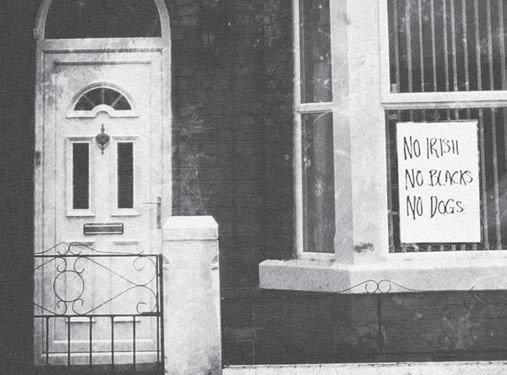

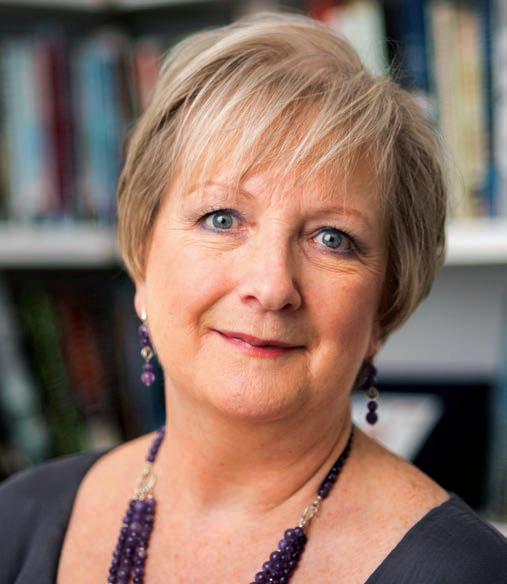
A new edition of ‘An Unconsidered People’, with new material and a Foreword by Diarmaid Ferriter is now available. It is published by New Island. Artwork (copyright) by kind permission of artist Bernard Canavan.
e Kings of e Kilburn High Road runs at omastown community hall from March 17th.
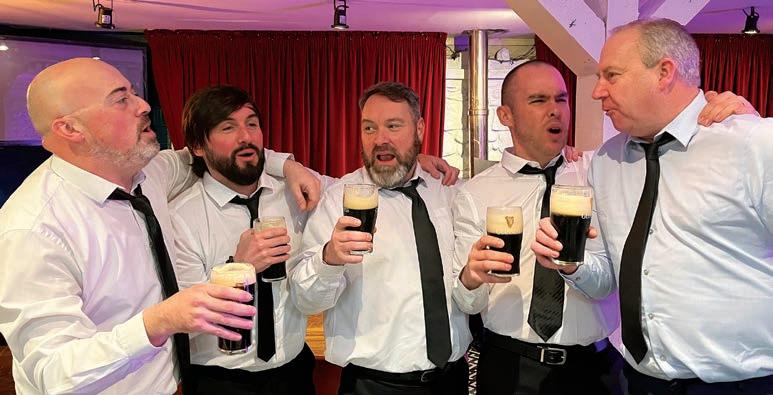

One in ve rms has no female boss
ONE in ve Irish businesses has no women in senior management roles, according to a major new survey that also shows the portion of women in the top jobs shrank during the pandemic.
Women are in 30% of the most senior jobs, down from 33% last year. is compares with 32% globally.
Yet, most medium-sized employers believe the health crisis has expanded opportunities for women workers, according to Grant ornton’s Women in Business report. e shrinking portion of women in senior positions was revealed as Engineers Ireland highlighted that women were leaving the industry.
Although 23% of engineering graduates are women, it says just 12% of those actually working in the engineering sector are in fact women.
According to the Grant ornton report, released for International Women’s Day, a total of 19% of Irish businesses have no female senior managers. In addition, 21% have just one woman in a senior management role.
is means Ireland is well behind the UK in terms of having a gender balance among its highest-paid employees.
“Ireland appears to fare worse when compared to our neighbours in the UK where 2% of businesses have no women in senior management positions,” says Grant ornton’s statement on the report. e survey concludes that the portion of Irish rms without women managers is also signi cantly higher than the EU average of 14%.
Time will tell of pandemic mental toll on farmers



THE fallout of Covid-19 on farmers’ mental health will be revealed in the coming months and even years, Irish Rural Link (IRL) has warned.
Although most pandemic restrictions have been lifted, CEO of IRL Seamus Boland said volunteers had been “shocked” by the high level of loneliness in the farming community. e warning comes as the Samaritans launche a new mental health campaign with Ireland’s dairy co-operatives by featuring the charity’s helpline signage on milk tankers travelling across the countryside. e latest edition of MediaHuss Farming Independent features a special report on farmer health, with touching personal testimonies and expert advice on how farmers can mind their physical and mental well-being while going about their daily chores on farm.
Meanwhile M Boland said: “We organised a voluntary response to Covid where we mobilised champions in each county to be available to assist people with practical help during the strong lockdowns. “In that period, they all reported back that they were surprised and, in some cases, shocked by the high level of loneliness,” he said.
“Unfortunately, we are also aware of a small but signi cant number of farmer suicides, but we will have to wait for the statistics on this. Farmers require speci c-to-farming helplines and counselling experts knowledgeable on farming.”
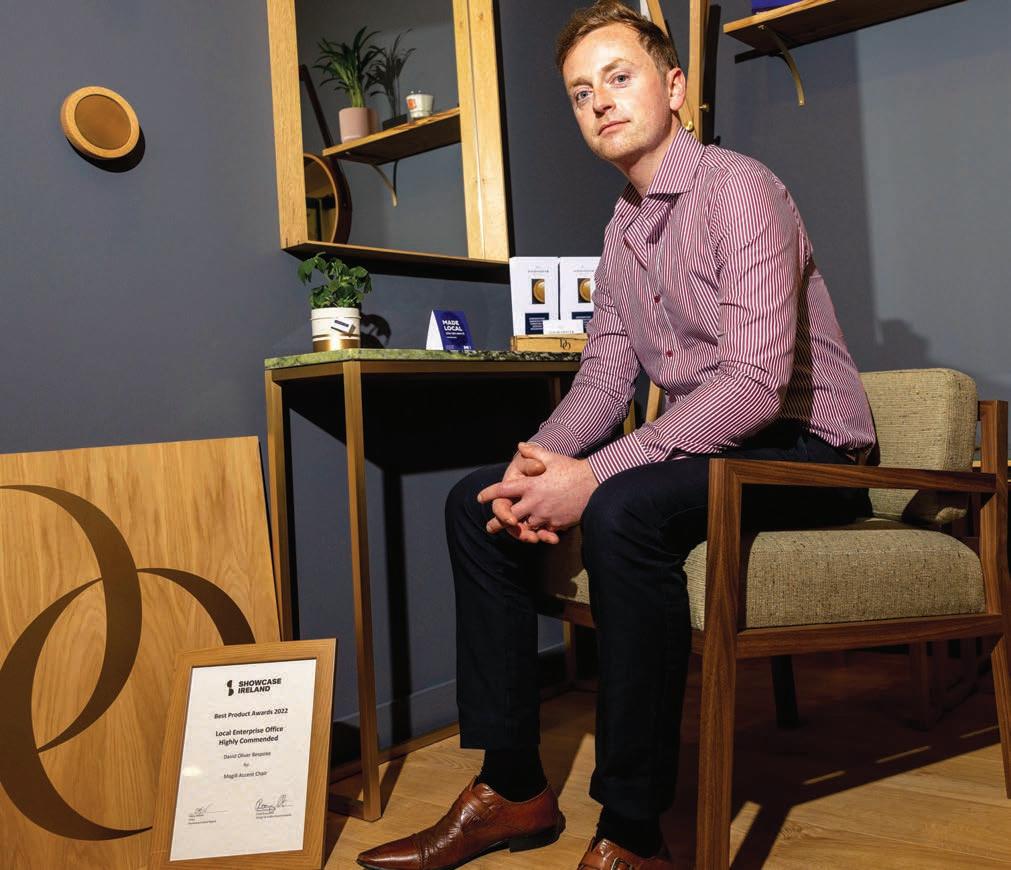
No permit to convert vacant pubs into homes
THE Minister for Housing, Local Government and Heritage, Darragh O’Brien, TD, has signed planning regulations that will exempt the conversion of former pubs into residential units from requiring planning permission in Kilkenny or elsewhere. e move has been welcomed by his Cabinet colleague, Minister of State for Heritage and Electoral Reform, Malcolm Noonan TD. BUSINESSES from Co Kilkenny had the opportunity to meet buyers from all over the world as part of the recent Local Enterprise Showcase at Showcase 2022 in the RDS in Dublin. ere were more 100 Local Enterprise O ce supported businesses from across the country present at the event with two from Kilkenny. Start Up Businesses Yellow Deer Designs and David Oliver Bespoke ( pictured) were exhibiting at the Local Enterprise Showcase, part of Showcase 2022 for the rst time, that saw over 4,000 buyers from retailers across the globe attend the fourday event in Dublin looking to secure new sales and partners for the year ahead. Kilkenny businesses also exhibiting at Showcase 2022 included among the many: • Fred O’Mahony Woodturning, • Irish Linen Shirts, • Cushendale Woollen Mills, • Jerpoint Glass, • Kilkenny Silver, • Kilkenny Crystal and • Nicholas Mosse. Cathaoirleach of Kilkenny County Council Fidelis Doherty said: “It is encouraging to see the return of Showcase to give our talented designers and craftspeople the opportunity to sell their products to national and international buyers.
“It provides them with the opportunity to meet with buyers speci c to their market from countries all over the world, opening doors to new export opportunities that they simply would not get anywhere else.” e Kilkenny companies were selected by Local Enterprise O ce (LEO) Kilkenny to take part in this year’s showcase. e LEO have been working closely with them in recent months to ensure they are in the best possible position to maximise their appearance at the event including sales technique, marketing materials and stand production. is was rewarded with David Oliver Bespoke being featured on RTE’s Nationwide with another Local Enterprise O ce Kilkenny supported client, Fred O’Mahony Woodturning, also based in south Kilkenny. Awards were also presented to Irish Linen Shirts, based in Inistioge, Co Kilkenny who received the Fashion Category Award for their Irish Linen Shirt Dress, while Cushendale Woollen Mills received the Home Category Award for their Silare Mohair row. e show, which marked its 46th edition this year, is one of Ireland’s largest and most important international trade fairs. Showcase is presented on behalf of Design & Crafts Council Ireland, with support from Enterprise Ireland in promoting the trade show internationally, and the Local Enterprise O ces nationwide.
Fiona Deegan, Head of Enterprise, Local Enterprise O ce Kilkenny, said: “We are delighted to partner with the Design and Craft Council Ireland and Enterprise Ireland to highlight the wealth of talent amongst emerging creative businesses across the country, and in supporting their commercial potential through the Local Enterprise Showcase.
“For many it is their rst time exhibiting and this dedicated area plays a critical role in allowing them to launch new collections, secure orders and connect with national and international trade buyers, enabling them to develop their business and expand,”
Local business gets to rub shoulders with the global market
Chimps use insects to treat their wounds !
CHIMPANZEES have been lmed using insects to tend the wounds of their family and friends in a world rst.
No species, apart from humans, has been seen using other creatures as a medicine before. Animals such as elephants, bears and bees have been observed self-medicating but with plants, not animals.
Researchers from Osnabruck University in Germany were studying 45 chimps at Loango National Park in Gabon with sta of the Ozouga Chimpanzee Project when the discovery was made.
Volunteer Alessandra Mascaro was lming a mother and son in the wild in November 2019 when she witnessed something unusual. Sia, an adolescent male, had a wound on its foot that its mother Suzee was inspecting. As the older chimp diagnosed the issue, it caught an insect in mid-air, put it into its mouth, and then pasted it on to the wound. “In the video, you can see that Suzee is rst looking at the foot of her son, and then it’s as if she is thinking, ‘What could I do?’ and then she looks up, sees the insect, and catches it for her son,’” Ms Mascaro said.
“Discussing these observations and the possible function of the behaviour with the team members, we realised that we had never seen such a behaviour and that it had also never been documented before.”
e researchers watched for similar behaviour and, over 15 months, they recorded 76 open wounds on 22 chimpanzees being treated with insects.
In 19 cases the chimp rubbed insects on itself, but on three occasions, the team saw an injured ape being tended to by a family member or friend.









